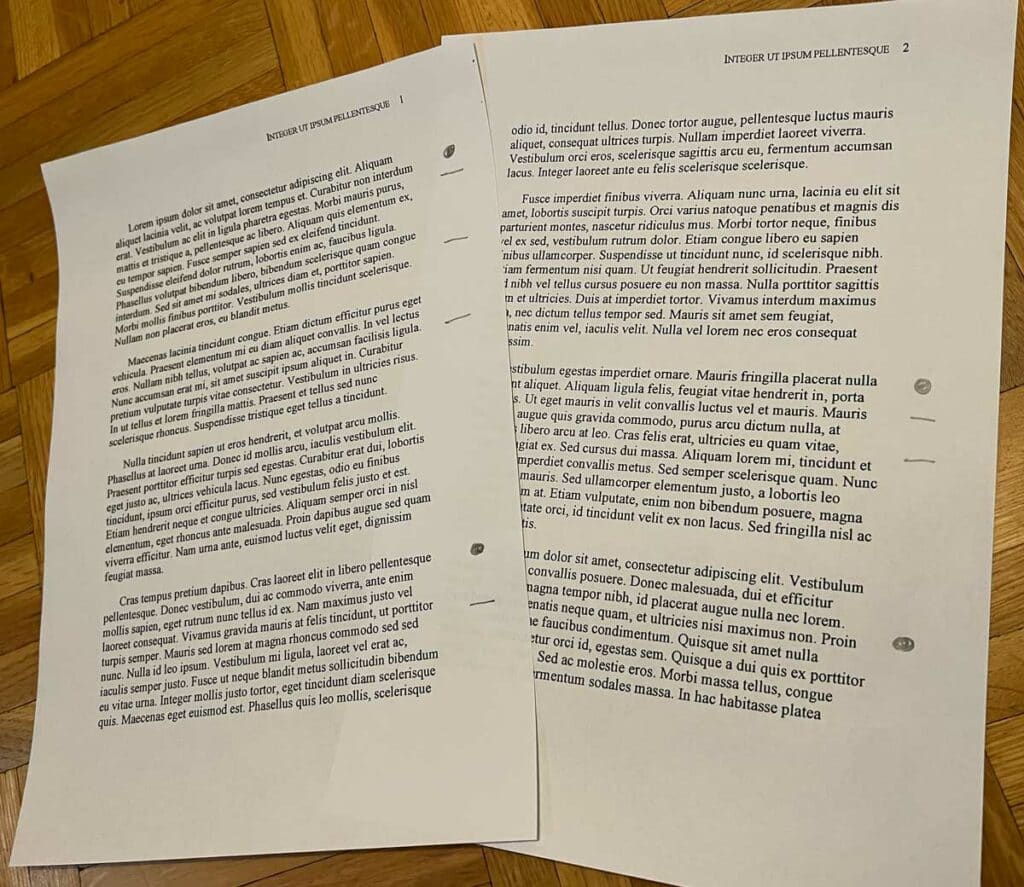- The Morse Code Note-taking method is a strategy for taking notes from books and other written material.
- It stands out in how it lets you keep reading uninterrupted while taking notes.
- At the same time, it promotes active reading, comprehension, and critical thinking skills.
Are you overwhelmed with the assigned readings in class? Do you need to read tons of reading material before writing a paper? Do you need to memorize a massive amount of facts and ideas?
Do you resort to reading through the material from cover to cover multiple times? Here’s a better way to get things done efficiently: taking notes. And while there are many ways to approach note-taking, one stands out for its efficiency – the Morse Code note-taking method.
The Morse Code Note-Taking Method

Why note-taking? (or "why not just read the book and be done with it?")
Before looking at the Morse Code note-taking method, let’s have a quick look at the role of note-taking in general. You might think that it is counter-intuitive to spend time taking down notes when you are pressed for time.
However, research shows that this extra effort leads to effective learning, and educators are encouraged to support students’ note-taking practice. Those that take notes tend to remember the information better.
In fact, when done right, note-taking will save time when studying. This is due to the fact that quality trumps quantity when it comes to note-taking. A recent study was able to show an improvement in students’ performance through the purposeful teaching of an effective method of note-taking.
There are several note-taking methods that are helpful for learners. Which one of these will depend on the type of material where the information comes from, the purpose of the note-taking, and the student’s preferences.
What is the Morse Code note-taking method?
A more recent addition to the realm of note-taking methods – and one that many academics swear by – is the Morse Code method, a variant of the Q/E/C method. Not to be confused with the way to represent letters and numbers used in telegraphing, this note-taking method takes inspiration from the dots and dashes in Morse code used to transmit information.
This method of taking down notes was developed by Cal Newport, a computer science professor at Georgetown University and best-selling author, as he needed a way to handle large amounts of complex text in the seminars he was taking. As it has subsequently gained popularity at universities, the method has seen some further improvements to make it more generally useable.
The MIT-trained professor highlights how this is a method for rapid note-taking due to the system of marking the pages of articles or books while reading. Importantly, it enables you to keep reading while taking notes rather than pausing to jot down the main ideas.
This is done by following the concept of Morse code – you use dots and dashes to represent the main ideas and supporting facts and examples. After you have finished reading the entire text, you use your notes in the margin to type up notes and then condense them into a format that is useful for further review.
The Morse Code method is a great method for textual analysis. While it may not be applicable to all types of reading material, Newport suggests using this method for complex materials, such as academic articles and book chapters.
Taking notes with the Morse Code method
The Morse Code method of note-taking has four simple steps.
- Determine what information you need (including pre-reading when relevant)
- Read the material and identify main and supporting ideas
- Paraphrase the ideas and write them down
- Condense the written ideas and figure out the main points in the material.
Determine what information you need
Start with thinking about what kind of information you need from your reading.
Are you preparing to write a paper? Consider spending a minute to write down what areas of relevance you are expecting in the reading. If there is an abstract or table of contents, skim through it first to give you an idea of what you will find in the text.
Are you studying for a test? Consider reviewing the learning objectives for your course before reading to help you focus on the relevant points.
Annotate while reading
Start reading the material. Whenever you come across what seems like a main idea, make a dot in the margin. For any important supporting facts, arguments, examples, or ideas, make a dash in the margin.
Do not stop reading! Instead, continue reading the rest of the material, mindfully adding more dots and dashes. Doing this will help with maintaining your thought flow and keep your reading speed up.
I would recommend using a pencil so that you can modify your markings during the next step.
Once finished with reading and annotating the text, you should end up with something looking like this:

Decode and paraphrase your notes
The next step is to go through your notes and paraphrase them into your own words. Don’t just copy the sentences from the text you’ve been reading – this paraphrasing is essential to facilitate better comprehension of the material.
This will be fairly time-consuming, but unless all you want are some visual indications in the text where there might be something important, it is a necessary step (but a rewarding one in that you get to grapple in a more creative way with the text).
Condense your paraphrased notes
As a final step, review the notes that you have written down and try to condense them further. As you go over the paraphrased ideas on paper, figure out the main issue that the reading material is pointing at and add it to your notes. This is great for preparing for essay questions and discussions.
Advantages and disadvantages of the Morse Code note-taking Method
What sets Morse Code note-taking apart from other methods is the combination of not stopping reading while taking notes with a paraphrasing (and condensing) step. While a similar effect can be achieved by highlighting, it is even faster, and it avoids the common pitfall of highlighting too much (and ending up with a page that resembles a fruit salad).
Let’s look at the advantages of the Morse Code note-taking method:
- As you do not stop reading, it is among the most efficient methods for covering larger quantities of text.
- It helps extract the main and supporting points from a text.
- It promotes active reading through the note-taking
- It facilitates reading comprehension and critical thinking through the decoding and condensing stages.
On the other hand, the method is not without its disadvantages – here are the main ones:
- It is not applicable to all types of reading material (in particular, material that is not structured in an argumentative academic style).
- Very little information is captured in your notes – if you wait too long to decode your notes, you may have forgotten the context.
- Less suitable for readers who tend to lose their focus when engaging in continuous reading (who may benefit from pausing and processing their notes paragraph by paragraph or page by page.
Overall, the Morse Code note-taking method is an excellent addition to a student’s toolbox – especially for advanced seminars and classes covering a lot of material that is assessed through essay-style questions.



